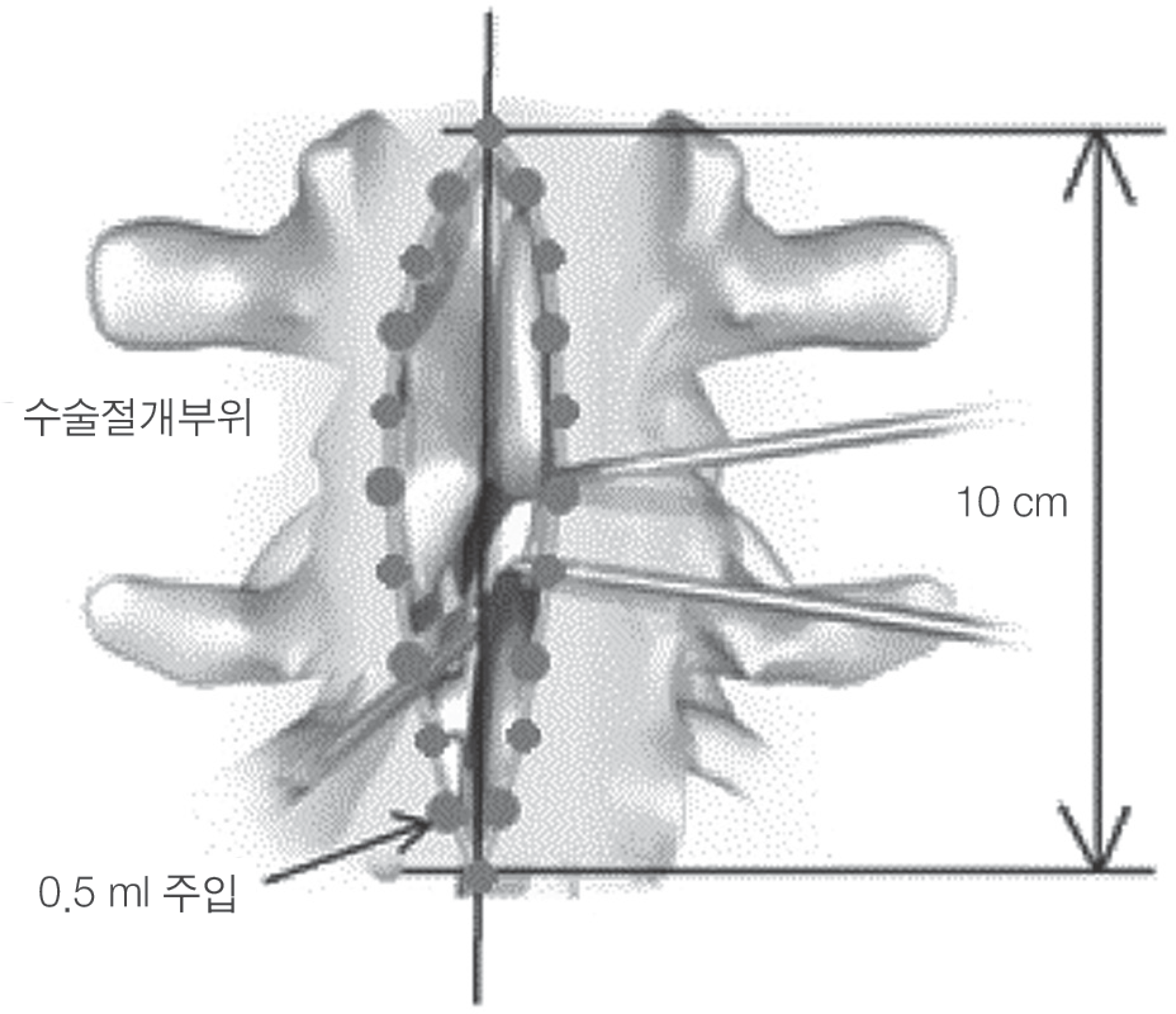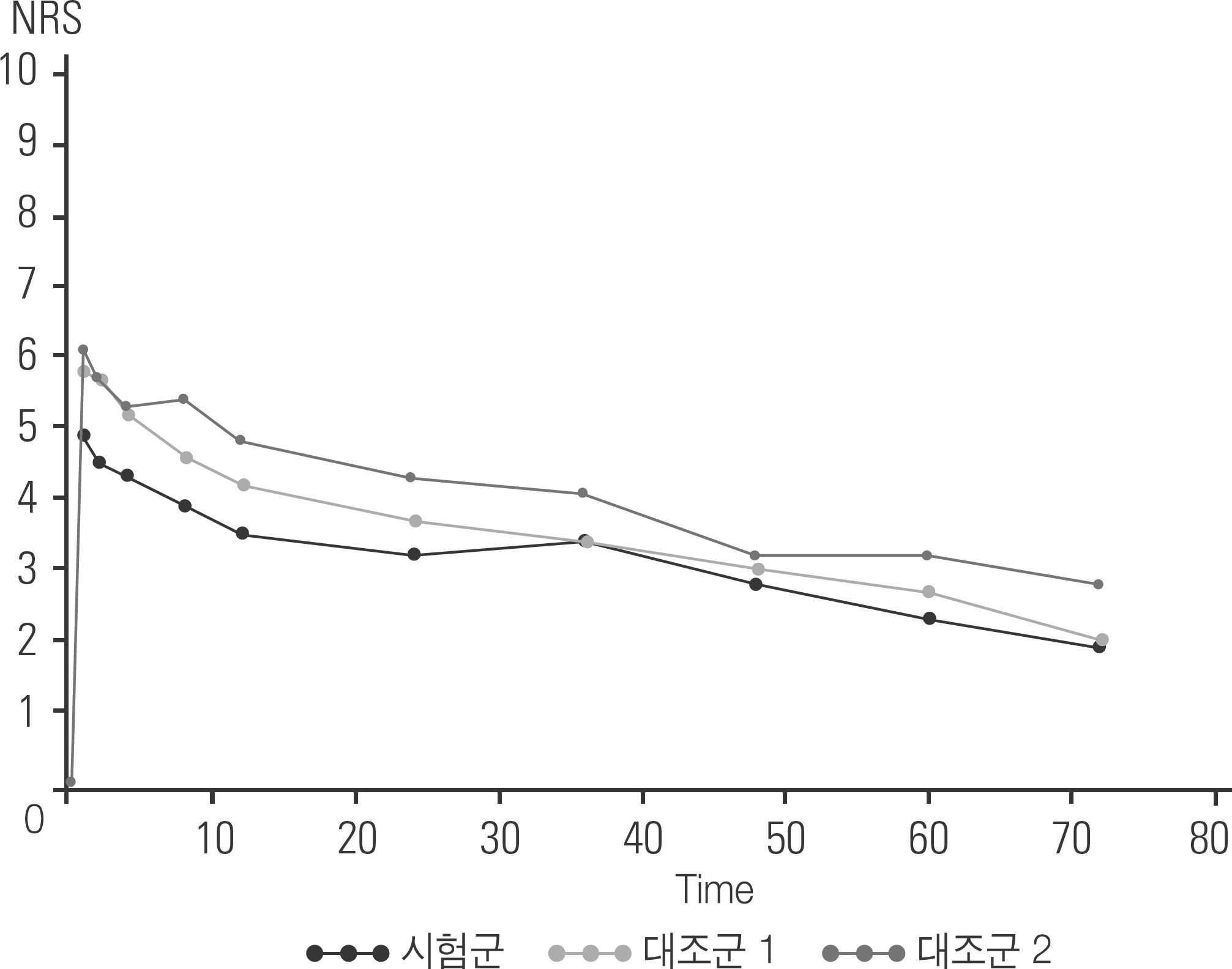2. Charles E. Argoff. Recent Management Advances in Acute Postoperative Pain. World Institute of Pain. 2014; 14(5):477–87. DOI:
10.1111/papr.12108.
3. Fortier J, Chung F, Su J. Unanticipated admission after am-bulatory surgery - a prospective study. Can J Anaesth. 1998 Jul; 45(7):612–9. DOI:
10.1007/BF03012088.

4. Sutters KA, Miaskowski C. Inadequate pain management and associated morbidity in children at home after tonsil-lectomy. J Pediatr Nurs. 1997 Jun; 12(3):178–85. DOI:
10.1016/s0882-5963 (97)80075-9.

5. Ahn EK, Kim JH, Chon SS, at al. The Comparison of Ropivacaine and Bupivacaine in Epidural Patient Controlled Analgesia (PCA). Korean Journal of Anesthesiology. 2002; 42(5):646–51. DOI:
10.4097/kjae.2002.42.5.646.
6. Park YS, Kim YC, Kim YH, at al. The Effects of Postoperative Patient Controlled Analgesia after Spinal Fusion. J Korean Soc Spine Surg. 1999 May; 6(1):141–5. DOI:
10.4184/jkss.1999.6.1.141.
7. Schenk MR, Putzier M, Kü gler B, at al. Postoperative analgesia after major spine surgery: patient-controlled epidural analgesia versus patient-controlled intravenous analgesia. Anesth Analg. 2006 Nov; 103(5):1311–7. DOI:
10.1213/01.ane/0000247966.49492.72.
8. Bianconi M, Ferraro L, Traina GC, at al. Pharmacokinet-ics and efficacy of ropivacaine continuous wound instil-lation after joint replacement surgery. Br J Anaesth. 2003 Dec; 91(6):830–5. DOI:
10.1093/bja/aeg277.
9. Garimella V, Cellini C. Postoperative pain control. Clin Colon Rectal Surg. 2013 Sep; 26(3):191–6. DOI:
10.1055/s-0033-1351138.

10. Vinson-Bonnet B, Coltat JC, Fingerhut A, at al. Local Infiltration with Ropivacaine Improves Immediate Postoperative Pain Control After Hemorrhoidal Surgery. Dis Colon Rec-tum. 2002 Jan; 45(1):104–8. DOI:
10.1007/s10350-004-6121-4.
11. Wang Z, Huang H, Yang S, at al. Long-term effect of ropivacaine nanoparticles for sciatic nerve block on postoperative pain in rats. Int J Nanomedicine. 2016 May 17; 11:2081–90. DOI:
10.2147/ijn.s101563.
12. Kim T, Seol DR, Hahm SC, at al. Analgesic effect of intra-articular injection of temperature-responsive hydrogel con-taining bupivacaine on osteoarthritic pain in rats. Biomed Res Int. 2015; 2015:812949. DOI:
10.1155/2015/812949.
13. Choi DH. Anesthesia and Pain Medicine. Korean Society for Intravenous Anesthesia. 2004 Dec; 8(4):193–6.
14. Forst J, Wolff S, Thamm P, at al. Pain therapy following joint replacement. A randomized study of patient-controlled analgesia versus conventional pain therapy. Arch Orthop Trauma Surg. 1999; 119(5-6):267–70. DOI:
10.1007/s004020050407.
15. Fisher CG, Belanger L, Gofton EG, at al. Prospective randomized clinical trial comparing patient-controlled intravenous analgesia with patient controlled epidural analgesia after lumbar spinal fusion. Spine (Phila Pa 1976). 2003 Apr 15; 28(8):739–43. DOI:
10.1097/01. brs.0000058943.93281.28.
16. Rathmell JP, Pino CA, Taylor R, at al. Intrathecal mor-phine for postoperative analgesia: a randomized, con-trolled, dose-ranging study after hip and knee arthroplasty. Anesth Analg. 2003 Nov; 97(5):1452–7. DOI:
10.1213/01. ane.0000083374.44039.9e.
17. Lambrechts M, O'Brien MJ, Savoie FH, at al. Liposomal extended-release bupivacaine for postsurgical analgesia. Patient Prefer Adherence. 2013 Sep 6; 7:885–90. DOI:
10.2147/ppa.s32175.
18. Cohen SM. Extended pain relief trial utilizing infiltration of Exparel
®, a long-acting multivesicular liposome formulation of bupivacaine: a Phase IV health economic trial in adult patients undergoing open colectomy. J Pain Res. 2012; 5:567–72. DOI:
10.2147/jpr.s38621.
19. Chahar P, Cummings KC 3rd. Liposomal bupivacaine: a review of a new bupivacaine formulation. J Pain Res. 2012; 5:257–64. DOI:
10.2147/jpr.s27894.
20. Nguyen QV, Huynh DP, Park JH, at al. Injectable poly-meric hydrogels for the delivery of therapeutic agents: A review. European Polymer Journal. 2015; 72:602–19. DOI: 10.1016/j.eurpolymj.2015.03.016.
21. Hoare TR, Kohane DS. Hydrogels in drug delivery: Prog-ress and challenges. Polymer. 2008 Apr; 49(8):1993–2007. DOI:
10.1016/j.polymer.2008.01.027.

22. Oh KS, Hwang CS, Lee HY, et al. Preclinical studies of ropivacaine extended-release from a temprature responsive hydrogel for prolonged relief of pain at the surgical wound. Int J Pharm. 2019 Mar 10; 558:225–30. DOI:
10.1016/j.ijpharm.2019.01.011.




 PDF
PDF ePub
ePub Citation
Citation Print
Print




 XML Download
XML Download